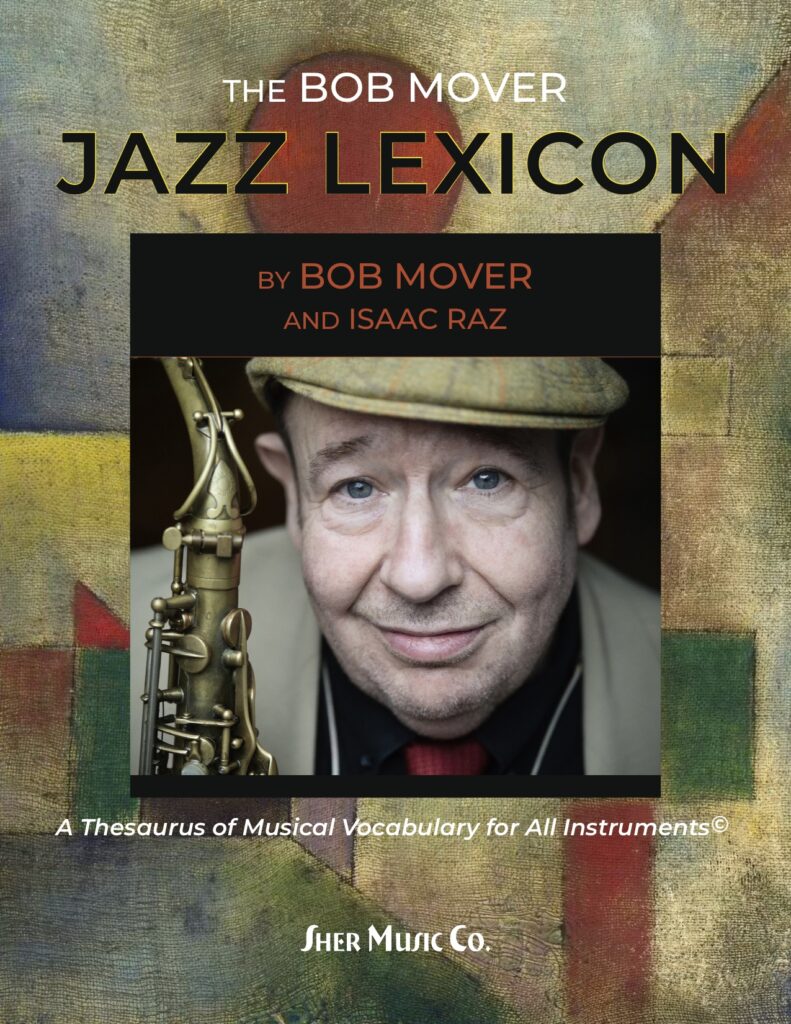
There’s a lot of books out there with II-V-I licks galore, etudes, patterns and such.
It didn’t used to be so saturated as it is now, but with this abundance comes a challenge.
What do you buy?
Which book is actually worth getting?
What sounds good?
What makes one book better than another?
I find that the best ones tend to be books that are the result of a very personal approach or style or way of thinking. This book by Bob Mover is one of those special ones.
First and foremost, this book is huge. There are so many musical ideas. As I went through each line, I got so many new ideas on how to create interesting melodic shapes. Many are arranged in a very logical way, suggesting context (over a II-V-I) or suggesting a logical cycle. For the serious jazz musician, you will get hours, days, months and potentially years of value from this book.
The book is divided in 41 sections, each covering 10 of the phrases, except for the 41st section which has the final 7 ideas. Most of these ideas really open up both your ears and technique.
Probably the best summary for the book is this excerpt from the “How to Use this Book” section:
Another Zen Master, albeit an American who lived in Queens, Lennie Tristano once said to me, “People talk about playing what you hear. Well, I’m not interested in teaching that. I want to teach you to play what you don’t hear!”
In this sense I would wish that these exercises might serve to assist you, the student, in constantly expanding to another level of musical understanding and coherent expression.
In all honesty, some of these ideas are in a way, “way above my paygrade”. But, for that exact reason, this collection of musical vocabulary is a powerful resource for the hardworking and curious musician.
I would imagine taking one to three of these ideas would be more than enough for a solid practice session, especially if you start working out logical smooth fingerings that flow AND allow you to play at high tempos.
In conclusion, I would recommend this book more to intermediate and advanced musicians who are eager to find new melodic possibilities for both improvisation and composition. For beginner students, it might be a good idea to get a more straightforward book with a single focused application lined up (a collection of II-V-I licks or etudes for standards or blues etudes) – all of these commonly available in the market. But, for students that are ready to break from the norm, this book delivers on what it promises. I certainly have gotten new ideas since I got this book… and you might too.
Get your copy of the book (both print and eBook versions) here: https://www.shermusic.com/9780991077328.php
Many thanks to Chuck Sher for sending me a copy of this amazing book for this review. I deeply appreciate it.
Pros: Great collection of melodic ideas in all sorts of tonalities and patterns.
Cons: This is pretty much a DIY (do it yourself) kind of book. Play the lines and ideas, and then experiment to see how you can apply this in context.
TLDR: If you want new interesting single note melodic improvisation ideas, get this book now!
[Submissions for Review Consideration]
- Are you an author who wrote a jazz, guitar or music book?
- Have you created a DVD or an online video course or subscription based website?
- Would you like me to review your book/course?
Please send me a message at azsamad3 at gmail.com with:
For courses: a link to the course/video/product + access info etc.
For books: a link to the book (Dropbox) or PDF attachment (if it’s small) for review consideration.
Depending on whether I dig the book/course, I’ll let you know if I do plan to review it!
I cannot guarantee a review for every submission & if I’m not too into it, I may opt not to review it. I mean, it’s better to get a good review that for me to write a bad review just because it’s not a match for the kind of stuff I dig right? :p
NOTE: All reviews reflect my honest personal opinion so be aware that I will point out both cool Pros and Cons that I see in the work. You dig?
Leave a Reply